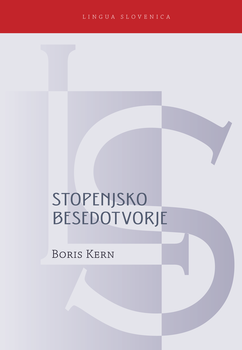Stopenjsko besedotvorje. Na primeru glagolov čutnega zaznavanja
V monografiji so predstavljene besedotvorne in pomenotvorne zmožnosti glagolov, ki označujejo zaznavanje s petimi čuti: vidom, sluhom, vohom, tipom in okusom. Delo temelji na stopenjski metodologiji, ki raziskovanje binarnega odnosa med motivirajočo in motivirano besedo razširi na odnos med netvorjeno besedo in vsemi njenimi neposrednimi in posrednimi tvorjenkami.
Prvi del je posvečen opredelitvam osrednjih terminov: glagolov čutnega zaznavanja, stopenjskega besedotvorja in slovarskega pomena. Prikazan je tudi zgodovinski pregled razvoja stopenjske metodologije. Sledi leksikografski del, ki zajema 38 besedotvornih sestavov s 1195 stopenjskimi tvorjenkami. V nadaljevanju pa najdemo statistično analizo gradiva, in sicer z vidika besednovrstne pripradnosti tvorjenk, stopenj tvorjenosti in tvorbenih modelov.
Osrednji del raziskave je osredotočen na analizo t. i. besedotvornih nizov, predvsem z vidika besedotvornega pomena, besedotvornih vrst in slovarskega pomena. Stopenjskobesedotvorna razčlenitev gradiva prikaže bogato sliko besedotvornega in pomenotvornega mehanizma v slovenščini, poleg tega pa monografija ponuja tudi predloge izboljšav slovarskih obravnav v SSKJ-ju.
Prenosi

Zbirka
Inštitut
Licenca

To delo je licencirano pod Creative Commons Priznanje avtorstva-Nekomercialno-Brez predelav 4.0 mednarodno licenco.
